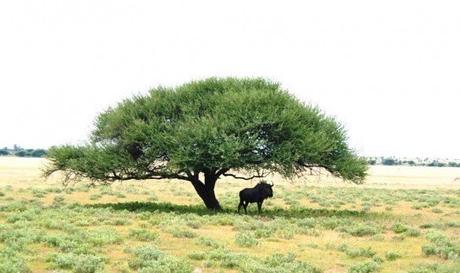What’s special about a wild safari in Botswana? Hear from our guest, Pete Webb.
Selinda Camp, Okavango Delta: My young guide, Mokopi, was very knowledgeable. We stopped the car under a thorn tree by a large stretch of open country and I couldn’t believe my eyes when I saw a fully-grown male lion walk past us about 40 metres away. The lion walked over to a convenient termite mound, then sat down and stared at us in a disinterested fashion, yawning from time to time. Unforgettable!
Gunn’s Camp, Okavango Delta: Situated in a belt of mature woodland, there was a great variety of habitat and superb bird watching during siesta time. As a car-free camp, we went out in the motor boat and on one occasion, a mokoro (native canoe) for our wilderness safari. The guides were only too willing to accommodate my desire to get out on foot, so we spent part of each day walking, mainly on Chief’s Island. We saw a rock python, Motsai’s (the guide) first in this part of the Delta, and the very elusive African wild cat.
Kwara Camp: On our game drives we spotted lions and on one occasion, a female cheetah with three cubs. We enjoyed watching the cubs “stalk” a pack of baboons, then turn round and run like the wind when the baboons chased the cubs off at a furious pace. The sunsets from this camp’s sundowner spots were especially good, particularly on the evening boat trips. The hippos at night were evident, with roaring and grunting around 4am!

Tau Camp: With impressive, wide views across Tau Pan, the accommodation was incredibly spacious.
There was a wide range of birds of prey here, many of them sitting obligingly still on tree branches so that the guide, the tracker and I could observe and discuss the finer points that distinguished western and eastern forms, male and female, immature from mature.
We were driving back to camp one evening when a male and female lion stepped out from behind a bush onto the road – a mere 25 metres in front of us. They walked straight past the car as if we were invisible. I also saw a honey badger that day, a first for me. The nights here were marked by the grunt and roar of lions, sometimes impressively close.
Camp Kalahari: John, my guide had a wealth of bush lore, particularly tracks and trails. I felt flattered when he asked me to take part in his monthly bird tally – driving along a 2km transect stopping every 200ms to identify and record the birds.
It was here that I had my meerkat encounters and I felt a tremendous sense of privilege when one climbed gently up onto my shoulder.
John told me that most people visit the Kalahari desert in winter as water is scarce so the waterholes act as a magnet to game, but I felt fortunate to be here in the summer, at the end of the wet season, as there was plenty of water in the pans, and hence numerous wading birds and game.
plan a safari in botswanaDesign your own safari to Botswana today!
